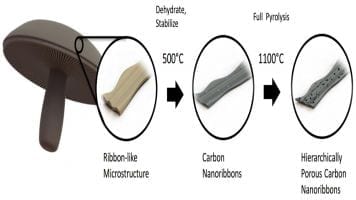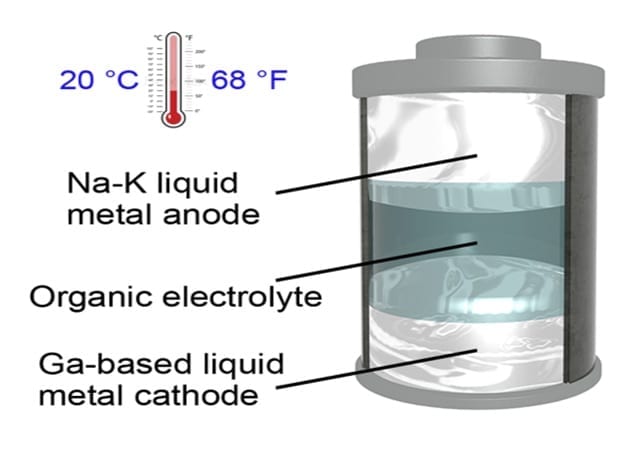
Porous structure of portabella mushrooms is key to making efficient batteries that could power cell phones and electric vehicles
Can portabella mushrooms stop cell phone batteries from degrading over time?
Researchers at the University of California, Riverside Bourns College of Engineering think so.
They have created a new type of lithium-ion battery anode using portabella mushrooms, which are inexpensive, environmentally friendly and easy to produce. The current industry standard for rechargeable lithium-ion battery anodes is synthetic graphite, which comes with a high cost of manufacturing because it requires tedious purification and preparation processes that are also harmful to the environment.
With the anticipated increase in batteries needed for electric vehicles and electronics, a cheaper and sustainable source to replace graphite is needed. Using biomass, a biological material from living or recently living organisms, as a replacement for graphite, has drawn recent attention because of its high carbon content, low cost and environmental friendliness.
UC Riverside engineers were drawn to using mushrooms as a form of biomass because past research has established they are highly porous, meaning they have a lot of small spaces for liquid or air to pass through. That porosity is important for batteries because it creates more space for the storage and transfer of energy, a critical component to improving battery performance.
In addition, the high potassium salt concentration in mushrooms allows for increased electrolyte-active material over time by activating more pores, gradually increasing its capacity.
A conventional anode allows lithium to fully access most of the material during the first few cycles and capacity fades from electrode damage occurs from that point on. The mushroom carbon anode technology could, with optimization, replace graphite anodes. It also provides a binderless and current-collector free approach to anode fabrication.
“With battery materials like this, future cell phones may see an increase in run time after many uses, rather than a decrease, due to apparent activation of blind pores within the carbon architectures as the cell charges and discharges over time,” said Brennan Campbell, a graduate student in the Materials Science and Engineering program at UC Riverside.
Read more: Making Batteries with Portabella Mushrooms
The Latest on: Making Batteries with Portabella Mushrooms
[google_news title=”” keyword=”Making Batteries with Portabella Mushrooms” num_posts=”10″ blurb_length=”0″ show_thumb=”left”]
via Google News
The Latest on: Making Batteries with Portabella Mushrooms
- MIT Technology Reviewon May 1, 2024 at 5:00 pm
Batteries can unlock other energy technologies, and they’re starting to make their mark on the grid. This article is from The Spark, MIT Technology Review’s weekly climate newsletter. To receive it in ...
- Scientists make breakthrough with high-power lithium-sulfur batteries: 'Our research shows a significant advancement'on May 1, 2024 at 4:30 am
A research team at the University of Adelaide in Australia may have turned a corner regarding lithium-sulfur batteries — their lab work indicates a recent breakthrough that can drastically increase ...
- Scientists make breakthrough in production of salt-based battery technology: 'This process makes it easier'on April 26, 2024 at 3:30 am
The breakthrough could be a great win for the EV market. Scientists make breakthrough in production of salt-based battery technology: 'This process makes it easier' first appeared on The Cool Down.
- Samsung launches a pair of stylish battery banks with up to 45W chargingon April 25, 2024 at 8:46 am
Samsung has just launched a couple of new battery banks with simple, but stylish designs and up to 45W charging.
via Bing News










